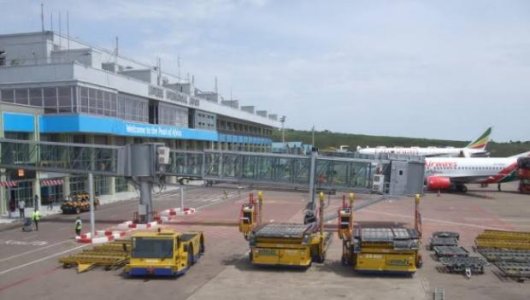Local.Dada
T20I Debutant
- Joined
- Sep 30, 2019
- Runs
- 6,991
Bloomberg) -- The four-times-a-week propeller plane from Karachi whips up a cloud of dust as it lands on an arid airstrip. Passengers cross the tarmac in the scorching sun and enter an arrivals terminal not much larger than a tractor-trailer. Outside, soldiers carrying AK-47s are waiting. This is Gwadar, a remote scratch of land on Pakistan’s southwest coast. Its port is the last stop on a planned $62 billion corridor connecting China’s landlocked westernmost province to the Arabian Sea, the crown jewel of President Xi Jinping’s Belt and Road Initiative, designed to build infrastructure and influence around the world.
Plans originally called for a seaport, roads, railways, pipelines, dozens of factories and the largest airport in Pakistan. But, almost seven years after the China-Pakistan Economic Corridor was established, there’s little evidence of that vision being realized. The site of the new airport, which was supposed to have been completed with Chinese funding more than three years ago, is a fenced-off area of scrub and dun-colored sand. Specks of mica in the dirt are the only things that glitter. The factories have yet to materialize on a stretch of beach along the bay south of the airport. And traffic at Gwadar’s tiny, three-berth port is sparse. A Pakistan Navy frigate is the only ship docked there during a recent visit, and there’s no sign of the sole scheduled weekly cargo run from Karachi.
Less than one-third of announced CPEC projects have been completed, totaling about $19 billion, according to government statements. Pakistan bears much of the blame. It has repeatedly missed construction targets as it ran out of money; it got a $6 billion bailout from the International Monetary Fund last year, the country’s 13th since the late 1980s. Two successive prime ministers have been jailed on corruption charges. And the Baloch Liberation Army’s desire for a separate homeland in Balochistan province, where Gwadar is located, has made life there uneasy. In May, militants stormed the city’s only luxury hotel, shooting up the white-marbled lobby and killing five people.
But setbacks in Gwadar point to larger problems along the Belt and Road. China is scaling back its ambitions, not just in Pakistan but around the world. Its economic growth has slowed to the lowest rate in three decades, inflation is rising and the country has been feeling the effects of a trade war with the U.S. The picture is getting even darker as a coronavirus epidemic that originated in central China threatens to cause further delays and cutbacks. “The biggest constraint for China now is its own economy,” says Jonathan Hillman, a senior fellow at the Center for Strategic and International Studies in Washington.
In a number of countries, projects have been canceled, downsized or scrutinized. Malaysia renegotiated the terms of a rail link being built by China and scrapped $3 billion of planned pipelines. In Kenya, a court halted construction last year on a $2 billion power plant financed by China. And in Sri Lanka, new leaders said they want to regain control of a port in Hambantota that was leased to a Chinese company for 99 years when the previous government couldn’t pay back a loan. That takeover sparked concern in many Belt and Road countries that China’s largesse comes with the risk of ceding critical infrastructure. And it has increased wariness about the price of indebtedness to China, which the Washington-based Center for Global Development says puts at least eight nations, including Pakistan, at high risk of debt distress.
All that could result in shaving hundreds of billions of dollars off an estimated $1 trillion of planned Belt and Road spending, according to a September report by law firm Baker McKenzie. While the value of signed projects increased last year, data from China’s Ministry of Commerce show actual spending stalled at $75 billion in 2019 after falling 14% the previous year. Total spending from the beginning of 2014, shortly after President Xi announced the initiative, through November 2019 is $337 billion, government figures show, far short of China’s ambitious goals.
For Full Article
https://www.yahoo.com/finance/news/one-china-most-ambitious-projects-210022297.html
Thoughts?









